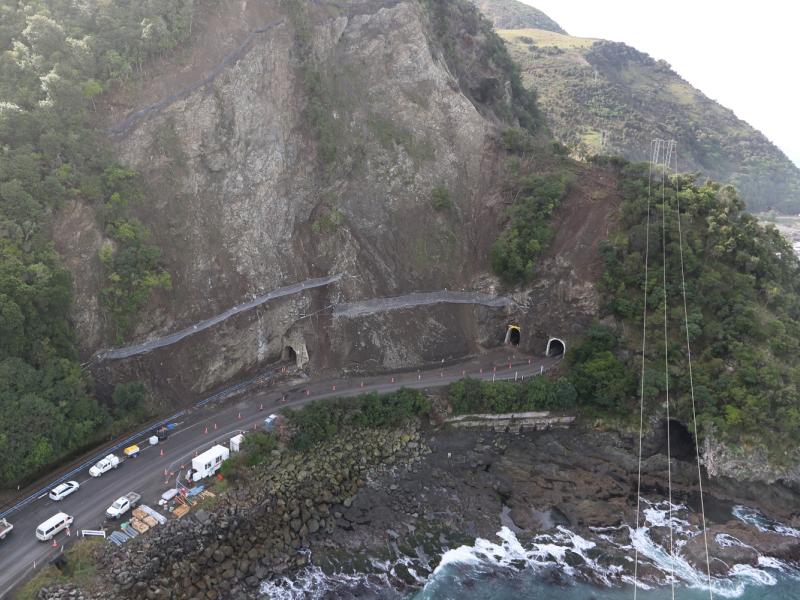
Kaikoura SR27a & SR30 Rockfall Barrier
Kaikoura is a coastal town in the North Canterbury region of the South Island of New Zealand. It is a popular tourist destination known for its abundant wildlife and its year round sperm whale population. The region was badly affected by an earthquake in the November 2016.
The magnitude 7.8(Mw) earthquake caused landslides and rockfalls along the coastal road of State Highway (SH1). SH1 links the Kaikoura town north to Blenheim and south to Christchurch and at the same time serves as a major tourist route with its scenic view along the coast. A rail corridor adjacent to SH1 is used as a major transportation mode to bring goods in from Picton was also affected by the earthquake.
There was an extraordinary effort in response to this extraordinary seismic event: 21 faults had ruptured, generating the strongest ground shaking ever recorded in New Zealand. The South Island itself moved, thousands of landslides came down, land rose and slumped along the eastern coast.
Transport infrastructure was devastated, with coastal and rural communities isolated overnight. The instant disruption to tourism, freight and primary industries was felt nationwide. Almost a million cubic metres of rock and material fell onto SH1 and the Main North Line; while the seabed rose under Kaikoura harbour. Traffic was forced onto narrow mountain roads never designed to carry the load.
Not long after the earthquake, the government established the North Canterbury Transport Infrastructure Recovery Alliance (NCTIR), The NCTIR was set up to restore the network, and keep traffic moving on alternate routes. This partnership between the NZ Transport Agency and KiwiRail was new territory, as was the collaboration of Downer New Zealand, Fulton Hogan, HEB Construction and Higgins on such scale. With work sites spread over a large geographical area stretching from North Canterbury to Marlborough - some very remote - the recovery effort sought to merge the knowledge of local contractors with resources from all over New Zealand.
A number of rockfall protection solutions and structures of varying energy capacities were considered and installed in several other sections of the road. These include Green Terramesh bunds, high energy rockfall barriers, hybrid barriers and debris flow fences amongst others. However in the case of SR27a and SR30, south of Kaikoura, there was very little space between the cliff face and the rail and road corridor, meaning a rockfall protection solution had to be able to provide sufficient protection with very little runoff area.
The best solution for these locations was a 100kJ ETAG27 certified fence at road shoulder beside the toe of the slope as it required little runoff area to provide good protection to passing vehicles.
Geofabrics supplied a RB100UAF Maccaferri fence system of 60 m and 90 m respectively with post heights of 3.0 m.
RB100UAF (100kJ) fence is the lowest energy on offer with ETAG27 certification at the time of publishing this case study. It is a system without up slope anchors and therefore suitable for installation in constrained spaces. The light weight of the posts and intercepting panels makes it a very quick and economical system to install with no heavy equipment required.
Geofabrics provided support to the fence installer with a detailed installation manual with step by step diagrams and detail drawings.



